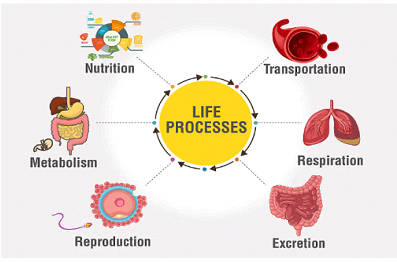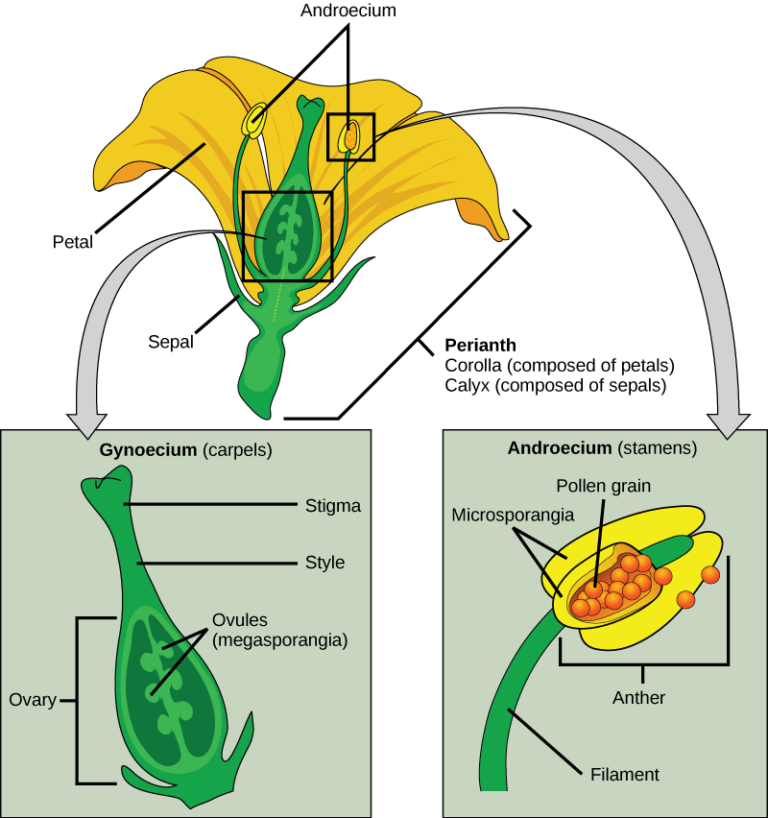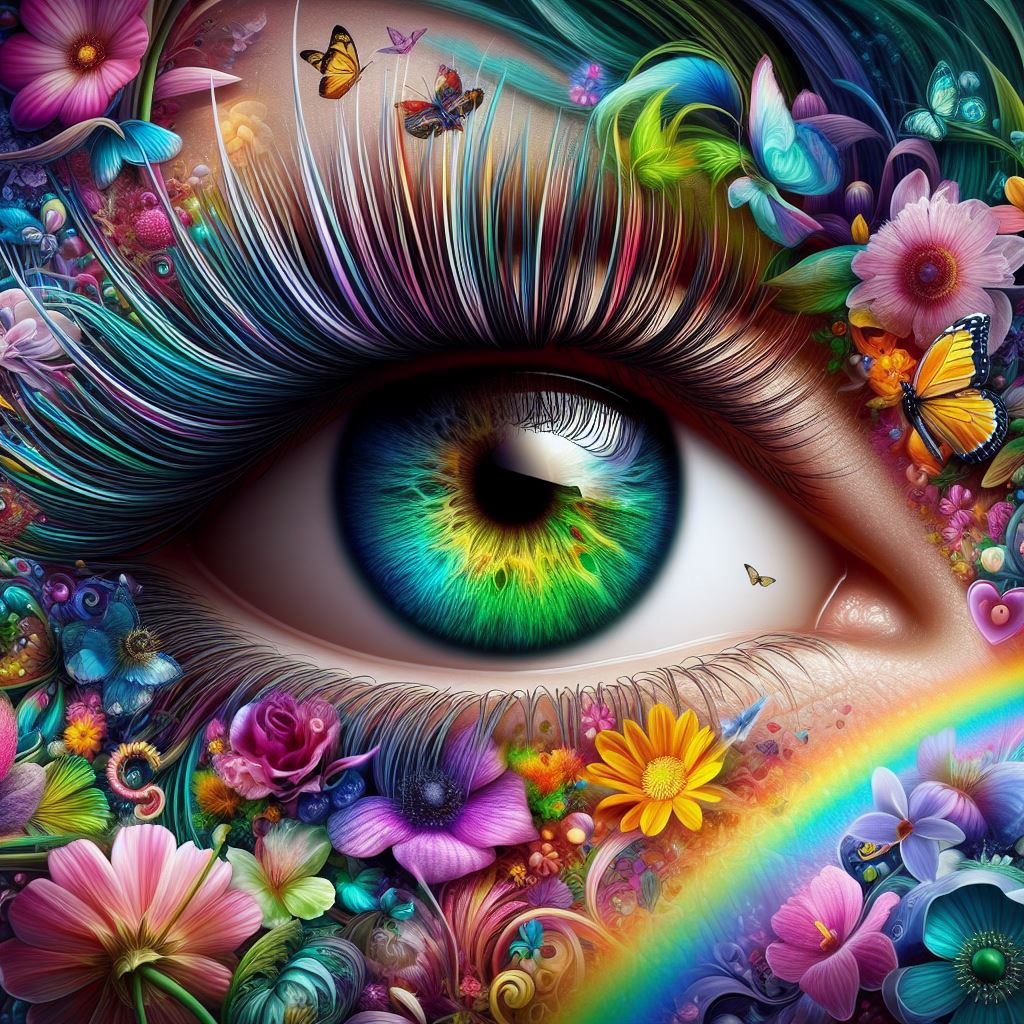100 most important question of the chapter Human Eye and Colorful world of Class 10th Science
- What is the function of the cornea in the human eye?
The cornea refracts light entering the eye to help focus it onto the retina. - What role does the iris play in vision?
The iris controls the size of the pupil, regulating the amount of light that enters the eye. - Describe the function of the lens in the human eye.
The lens focuses light onto the retina, enabling clear vision at various distances. - What is the retina’s role in the eye?
The retina contains photoreceptor cells that convert light into electrical signals sent to the brain. - Define accommodation in the context of the human eye.
Accommodation is the eye’s ability to adjust the lens shape to focus on objects at different distances. - What causes myopia, or nearsightedness?
Myopia is caused by the elongation of the eyeball or excessive curvature of the cornea, leading to light focusing before the retina. - How can myopia be corrected?
Myopia can be corrected with concave lenses, which diverge light rays before they enter the eye. - What causes hyperopia, or farsightedness?
Hyperopia occurs when the eyeball is too short or the cornea is too flat, causing light to focus behind the retina. - How can hyperopia be corrected?
Hyperopia can be corrected with convex lenses, which converge light rays before they enter the eye. - What is the function of the pupil in the human eye?
The pupil regulates the amount of light entering the eye by changing size in response to light intensity. - What is cataract, and how can it be treated?
Cataract is the clouding of the eye’s lens, treatable through surgical removal and replacement with an artificial lens. - What is astigmatism?
Astigmatism is a refractive error caused by an irregularly shaped cornea or lens, leading to blurred vision. - How can astigmatism be corrected?
Astigmatism can be corrected with cylindrical lenses or through refractive surgery. - Explain the dispersion of light.
Dispersion is the splitting of white light into its constituent colors when it passes through a prism. - What is atmospheric refraction?
Atmospheric refraction is the bending of light as it passes through layers of the atmosphere with varying densities. - Give an example of atmospheric refraction.
The apparent position of the sun during sunrise and sunset is an example of atmospheric refraction. - What is the Tyndall effect?
The Tyndall effect is the scattering of light by particles in a colloid or fine suspension, making the path of light visible. - How does the Tyndall effect explain the blue color of the sky?
The Tyndall effect scatters shorter blue wavelengths of sunlight more than longer wavelengths, making the sky appear blue. - What causes the red color of the sun at sunrise and sunset?
The red color is due to the scattering of shorter wavelengths and the predominance of longer red wavelengths reaching the observer. - What is the function of the optic nerve?
The optic nerve transmits visual information from the retina to the brain. - Define the blind spot in the human eye.
The blind spot is the area on the retina where the optic nerve exits the eye, lacking photoreceptor cells. - What are rods and cones in the retina?
Rods are photoreceptors for low-light vision, while cones are for color vision and detail. - What is the fovea centralis?
The fovea centralis is a small central pit in the retina with a high density of cones, responsible for sharp central vision. - Explain presbyopia.
Presbyopia is the age-related loss of the eye’s ability to focus on nearby objects, due to the hardening of the lens. - How can presbyopia be corrected?
Presbyopia can be corrected with bifocal or progressive lenses. - What is the aqueous humor?
The aqueous humor is the clear fluid in the front chamber of the eye, providing nutrients and maintaining intraocular pressure. - What is the vitreous humor?
The vitreous humor is the gel-like substance filling the eye’s posterior chamber, maintaining its shape. - What are photoreceptors?
Photoreceptors are cells in the retina (rods and cones) that detect light and convert it into electrical signals. - What is color blindness?
Color blindness is the inability to distinguish certain colors, usually due to a deficiency in one or more types of cones. - How does the eye maintain its shape?
The eye maintains its shape through the support of the aqueous humor and vitreous humor, which exert internal pressure. - What causes the phenomenon of afterimages?
Afterimages occur when the photoreceptors in the retina continue to send signals to the brain after exposure to a bright stimulus. - What is the role of the choroid in the human eye?
The choroid is a layer containing blood vessels that provide oxygen and nutrients to the eye. - What is the function of the sclera?
The sclera, or white part of the eye, provides protection and structural support. - How does the lens change shape to focus on near and distant objects?
The ciliary muscles adjust the shape of the lens, making it thicker for near objects and thinner for distant objects. - What is the primary cause of color vision deficiency?
Color vision deficiency is primarily caused by genetic mutations affecting the cones in the retina. - Explain the concept of total internal reflection.
Total internal reflection occurs when light passes from a denser to a rarer medium at an angle greater than the critical angle, causing it to reflect entirely within the denser medium. - What are the primary colors of light?
The primary colors of light are red, green, and blue. - What are the secondary colors of light?
The secondary colors of light, formed by mixing two primary colors, are cyan, magenta, and yellow. - What is the critical angle in optics?
The critical angle is the angle of incidence above which total internal reflection occurs. - Describe the phenomenon of a rainbow.
A rainbow is formed by the dispersion, reflection, and refraction of sunlight in raindrops, resulting in a spectrum of colors in the sky. - How does the human eye perceive depth?
Depth perception is achieved through binocular vision, where the brain combines the slightly different images from each eye to create a sense of depth. - What is night blindness?
Night blindness is the inability to see well in low light, often due to a deficiency in vitamin A. - What causes the phenomenon of scintillation or twinkling of stars?
Scintillation is caused by the atmospheric refraction of starlight as it passes through layers of air with varying temperatures and densities. - Explain why the sky appears blue during the day.
The sky appears blue during the day because shorter blue wavelengths of sunlight are scattered more by the molecules in the atmosphere. - Why do distant mountains appear blue?
Distant mountains appear blue due to the scattering of shorter blue wavelengths of light by the atmosphere, known as Rayleigh scattering. - What is the Purkinje effect?
The Purkinje effect is the shift in peak sensitivity of the human eye from green in bright light to blue in dim light. - What is the function of the conjunctiva?
The conjunctiva is a thin membrane that covers the white part of the eye and the inner eyelids, providing lubrication and protection. - How do corrective lenses work for vision defects?
Corrective lenses adjust the focal point of light entering the eye to correct refractive errors, improving vision clarity. - What is the difference between rods and cones?
Rods are responsible for vision in low light conditions and do not detect color, while cones are responsible for color vision and function best in bright light. - What is the significance of the yellow spot or macula?
The macula, also known as the yellow spot, is responsible for central vision and high visual acuity due to its high concentration of cones.
Dispersion (Human eye and colorful world)
- What is dispersion of light?
Dispersion of light is the phenomenon where white light splits into its constituent colors when passing through a prism. - Which device is commonly used to demonstrate the dispersion of light?
A glass prism is commonly used to demonstrate the dispersion of light. - Why does dispersion occur in a prism?
Dispersion occurs because different colors (wavelengths) of light refract by different amounts when passing through a prism. - What is the sequence of colors observed in a spectrum produced by dispersion?
The sequence of colors is red, orange, yellow, green, blue, indigo, and violet (ROYGBIV). - Which color of light is refracted the most in a prism?
Violet light is refracted the most in a prism. - Which color of light is refracted the least in a prism?
Red light is refracted the least in a prism. - Why do different colors of light refract by different amounts?
Different colors of light have different wavelengths and hence different speeds in a medium, causing them to refract by different amounts. - How is a rainbow formed in nature?
A rainbow is formed by the dispersion, refraction, and reflection of sunlight in water droplets in the atmosphere. - What role do water droplets play in forming a rainbow?
Water droplets act like small prisms, dispersing sunlight into its constituent colors. - Why are the colors of a rainbow always in the same order?
The colors are always in the same order due to the consistent way that different wavelengths of light refract through water droplets. - What is a secondary rainbow?
A secondary rainbow is a fainter, larger rainbow that appears outside a primary rainbow, caused by double reflection of light inside water droplets. - Why are the colors of a secondary rainbow reversed?
The colors are reversed because of the additional internal reflection in the water droplets. - Explain why the sky appears blue.
The sky appears blue because shorter blue wavelengths of sunlight are scattered more by atmospheric molecules than other colors. - What is meant by the term ‘spectrum’?
A spectrum is a band of colors produced when light is dispersed by a prism or other dispersive medium. - Who discovered the dispersion of light?
Isaac Newton discovered the dispersion of light. - What happens to white light when it enters a prism?
When white light enters a prism, it is refracted and dispersed into its constituent colors. - Why does a prism disperse light but a rectangular glass slab does not?
A prism has non-parallel sides that cause different colors to refract at different angles, whereas a rectangular slab has parallel sides that cause all colors to recombine upon exiting. - Can dispersion occur in a vacuum?
No, dispersion cannot occur in a vacuum because it requires a medium to cause different wavelengths to travel at different speeds. - Why does red light travel faster in glass than blue light?
Red light has a longer wavelength and experiences less refraction compared to blue light, which has a shorter wavelength. - What is the relationship between the wavelength of light and its refractive index?
The refractive index of a medium is higher for shorter wavelengths of light (such as blue and violet) and lower for longer wavelengths (such as red).
Atmospheric Refraction( Human eye and colorful world)
- What is atmospheric refraction?
Atmospheric refraction is the bending of light as it passes through different layers of the Earth’s atmosphere with varying densities. - How does atmospheric refraction affect the apparent position of stars?
Atmospheric refraction causes stars to appear slightly higher in the sky than their true position. - Why do stars twinkle?
Stars twinkle due to the continuous changing refraction of their light caused by turbulence in the Earth’s atmosphere. - Why don’t planets twinkle like stars?
Planets do not twinkle because they appear as tiny disks rather than point sources of light, and the atmospheric effects average out over their larger apparent size. - What causes the apparent flattening of the sun at sunrise and sunset?
The apparent flattening of the sun at sunrise and sunset is due to atmospheric refraction bending the lower edge of the sun more than the upper edge. - Why is the sun visible before actual sunrise and after actual sunset?
The sun is visible before actual sunrise and after actual sunset due to atmospheric refraction bending its light around the horizon. - What is the green flash phenomenon?
The green flash is a rare optical phenomenon that occurs shortly after sunset or before sunrise, where a green spot is visible above the upper rim of the sun. - Why does the green flash occur?
The green flash occurs due to the dispersion and refraction of sunlight in the atmosphere, which separates and bends the green light more than other colors. - Explain why the stars appear higher than their actual position in the sky.
Stars appear higher than their actual position because the Earth’s atmosphere refracts their light, bending it downward. - What is the mirage effect?
A mirage is an optical illusion caused by atmospheric refraction, where light rays bend to create the appearance of water or an inverted image. - How does atmospheric refraction cause mirages?
Mirages occur when light travels through layers of air at different temperatures, causing the light to bend and create false images. - What is the role of temperature gradients in the formation of mirages?
Temperature gradients create layers of air with varying densities, which bend light rays and produce mirages. - Why do distant objects appear to shimmer on hot days?
Distant objects appear to shimmer on hot days due to refraction caused by varying air temperatures near the ground. - How does atmospheric refraction affect the duration of daylight?
Atmospheric refraction extends the duration of daylight by making the sun visible before actual sunrise and after actual sunset. - What is the cause of the apparent shift in the position of celestial objects?
The apparent shift in the position of celestial objects is due to atmospheric refraction. - Explain the phenomenon of the twinkling of stars in terms of atmospheric refraction.
The twinkling of stars occurs because of the constantly changing refractive index of the Earth’s atmosphere due to temperature and density variations. - What is the impact of atmospheric refraction on astronomical observations?
Atmospheric refraction can distort the position and appearance of celestial objects, requiring astronomers to make corrections. - Why does the sun appear red during sunrise and sunset?
The sun appears red during sunrise and sunset because its light travels through a thicker layer of the atmosphere, scattering shorter wavelengths and leaving predominantly red light. - What is the ‘inferior mirage’ and how is it formed?
An inferior mirage occurs when the ground is very hot, causing the air above it to be warmer than the air higher up, bending light rays upward. - What is a ‘superior mirage’ and how does it form?
A superior mirage occurs in colder conditions when a layer of cold air is beneath warmer air, bending light rays downward. - How does atmospheric refraction cause the ‘St. Elmo’s fire’ phenomenon?
St. Elmo’s fire is not caused by atmospheric refraction but by the ionization of air molecules around pointed objects in a strong electric field. - Why do stars near the horizon appear to scintillate more than those overhead?
Stars near the horizon appear to scintillate more because their light passes through more of the Earth’s atmosphere, experiencing greater refraction and turbulence. - What is the significance of the critical angle in atmospheric refraction?
The critical angle determines the angle beyond which total internal reflection occurs, but it is more relevant in optics than atmospheric refraction. - How does atmospheric refraction affect the apparent size of the moon near the horizon?
Atmospheric refraction does not significantly affect the apparent size but the psychological effect called the moon illusion makes it appear larger. - Why is the sky darker at higher altitudes?
The sky is darker at higher altitudes because there is less atmosphere to scatter sunlight. - What is the role of atmospheric refraction in the phenomenon of the ‘Green Flash’?
Atmospheric refraction separates sunlight into different colors, occasionally making the green wavelength visible just as the sun sets or rises. - Explain how atmospheric refraction leads to the bending of light from the sun.
Atmospheric refraction bends light from the sun as it passes through layers of the atmosphere with varying densities. - Why does the apparent position of the sun differ from its true position during sunrise and sunset?
The apparent position differs because atmospheric refraction bends the light from the sun around the curvature of the Earth. - How does the variation in air density cause atmospheric refraction?
Variations in air density cause changes in the refractive index, bending the path of light passing through the atmosphere. - What role does atmospheric refraction play in optical illusions observed at sea?
Atmospheric refraction can create optical illusions such as ships appearing to float above the water due to the bending of light rays.




